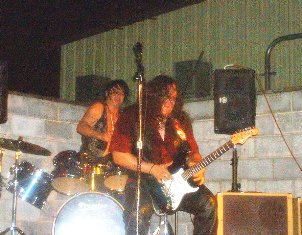
TKF IN FEBRUARY
The Killing Floor's first major recording sessions begin in mid-February!
Here are the songs that will hopefully make it on time, and all on the upcoming CD, getting the production out in March, '06:
1.Streets
2.Savvy
3.Mary Jane
4.It's All I Dream
5.Day By Day
6.Live
7.Hole In My Heart (Revision of 'You're So Excited')
8.It's Not Me
9.Satan's Alley (Instrumental)
10.Down, Down On Me (New song never performed live)













